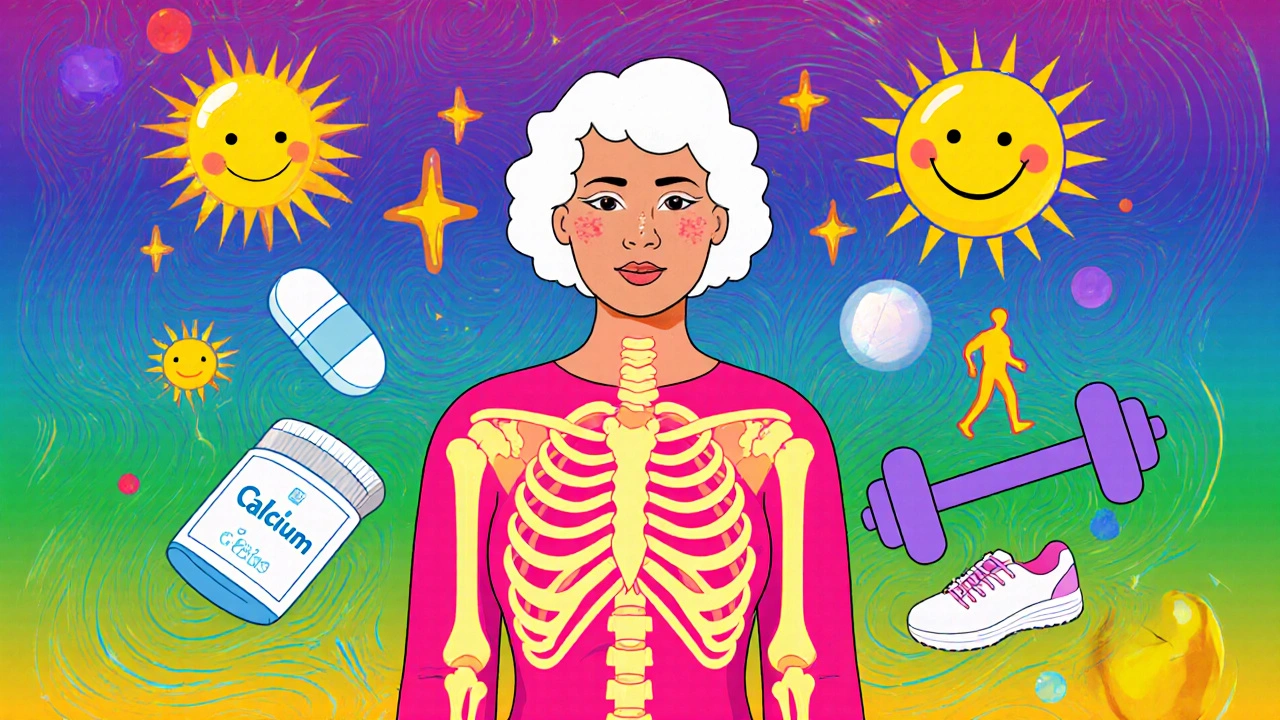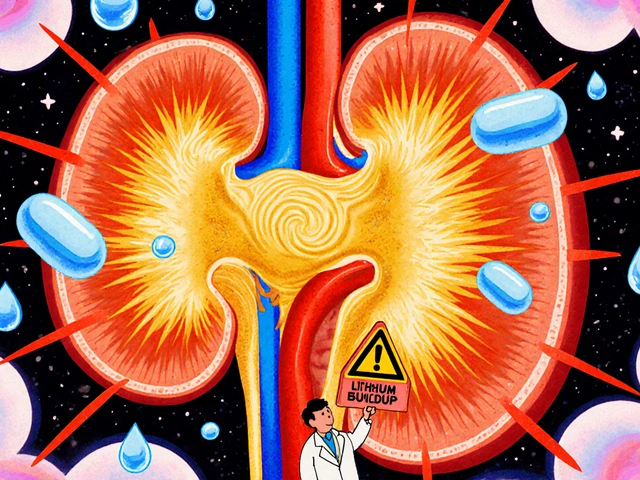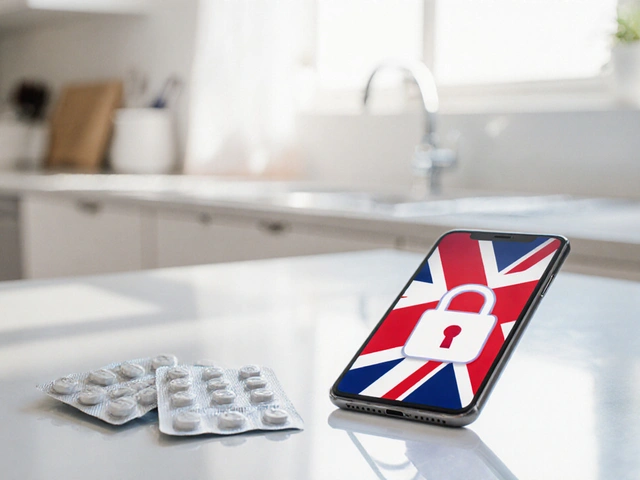If you’re taking methotrexate for rheumatoid arthritis, psoriasis, or another autoimmune condition, you’ve probably heard it’s hard on your liver or your stomach. But few people talk about how it can quietly weaken your bones-leading to osteoporosis, fractures, and long-term mobility issues. The truth? Long-term methotrexate use increases your risk of bone loss, even at low doses. And if you’re over 50, female, or already have low bone density, you’re at higher risk. The good news? You can stop this before it starts.
How Methotrexate Affects Your Bones
Methotrexate doesn’t directly dissolve bone like some cancer drugs do. Instead, it interferes with how your body builds and repairs bone tissue. It slows down osteoblasts-the cells that make new bone-and can increase activity in osteoclasts, the cells that break bone down. This imbalance leads to net bone loss over time.
A 2023 study in The Journal of Rheumatology followed 1,200 patients on methotrexate for over five years. Those taking 15 mg or more per week lost bone density at nearly twice the rate of people not on the drug. Even those on 7.5 mg per week-common for arthritis-showed measurable bone thinning after three years. This isn’t rare. Up to 30% of long-term methotrexate users develop osteopenia, and 10-15% go on to full osteoporosis.
It’s not just about the dose. Age, gender, and lifestyle matter too. Women after menopause lose bone faster naturally. If you’re also on corticosteroids like prednisone-which many rheumatoid arthritis patients take alongside methotrexate-your risk multiplies. Smoking, low vitamin D, and lack of movement make it worse.
Who’s Most at Risk?
Not everyone on methotrexate gets osteoporosis. But some groups are far more vulnerable:
- Women over 50, especially after menopause
- People taking methotrexate for more than 2 years
- Those on daily or weekly corticosteroids
- People with low body weight (BMI under 20)
- Smokers or heavy drinkers
- Those with low vitamin D or calcium intake
- People with a family history of hip fractures
If you check three or more of these boxes, you’re in the high-risk zone. That doesn’t mean you’ll definitely get osteoporosis-but it does mean you need to act now.
How to Test for Bone Loss
You can’t feel bone thinning until you break something. That’s why testing is critical. The gold standard is a DEXA scan-a quick, painless X-ray that measures bone density in your hip and spine.
The NHS recommends a DEXA scan for anyone on long-term methotrexate (more than 6 months) who is over 50, or under 50 with additional risk factors. Many GPs don’t bring this up unless you ask. Don’t wait for symptoms. If you’ve been on methotrexate for two years or more, request a scan. It’s free on the NHS.
Results are given as a T-score:
- -1.0 or higher: normal bone density
- -1.1 to -2.4: osteopenia (low bone mass)
- -2.5 or lower: osteoporosis
If your score is -1.5 or worse, you need a plan-not just a warning.
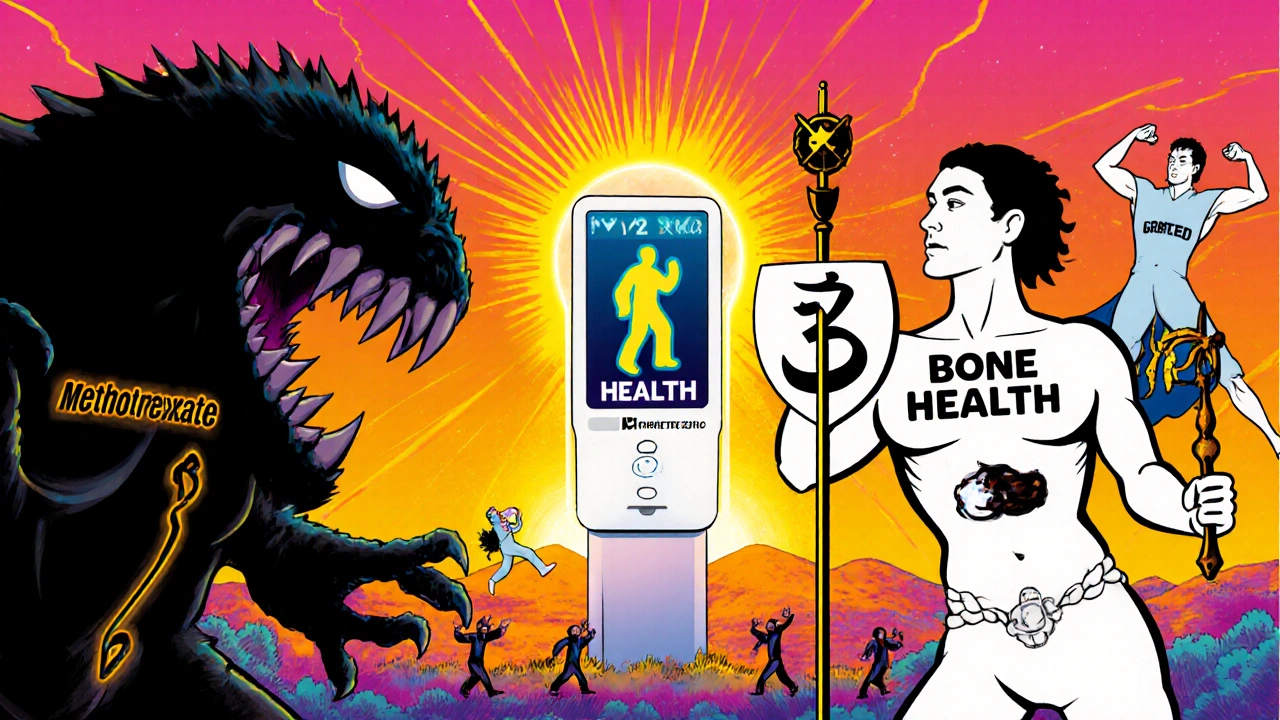
How to Prevent Bone Loss While on Methotrexate
Stopping methotrexate isn’t usually an option if you’re managing serious inflammation. But you can protect your bones without quitting the drug. Here’s what actually works:
1. Get Enough Calcium and Vitamin D
Your bones need calcium to rebuild. Vitamin D helps your body absorb it. Most adults need 1,000 mg of calcium and 800-1,000 IU of vitamin D daily. If you’re over 65 or have low sun exposure (common in the UK), aim for 1,200 mg calcium and 1,000 IU vitamin D.
Food sources: milk, yogurt, cheese, canned salmon with bones, kale, broccoli. But it’s hard to get enough from diet alone. Most people need supplements. Look for calcium citrate-it’s better absorbed than calcium carbonate, especially if you take acid-reducing meds.
Take vitamin D with a meal that has fat. It makes a big difference.
2. Move Your Body
Weight-bearing exercise is the most powerful bone builder you have. Walking, dancing, stair climbing, lifting weights-even light resistance bands-stimulate bone growth.
Do at least 30 minutes of weight-bearing activity five days a week. If your joints hurt, try swimming or cycling for cardio, but add 2-3 days of strength training. Muscle pulls on bone. That’s how bone gets stronger.
Balance exercises matter too. Tai chi or simple heel-to-toe walks reduce fall risk. One in three people over 65 fall each year. If your bones are weak, a fall can mean a broken hip-and a life-changing recovery.
3. Quit Smoking and Limit Alcohol
Smoking cuts blood flow to bones and lowers estrogen levels. Both hurt bone density. Quitting smoking can stop bone loss and even improve density over time.
Alcohol is worse than most people think. More than two drinks a day interferes with calcium absorption and vitamin D production. Stick to one drink max, or none.
4. Talk to Your Doctor About Bone-Protecting Medications
If your DEXA scan shows osteopenia or osteoporosis, your doctor may prescribe a drug to stop bone loss. These aren’t for everyone-but they’re life-changing for high-risk patients.
Bisphosphonates like alendronate (Fosamax) or risedronate (Actonel) are the most common. They slow down bone breakdown. Taken weekly or monthly, they reduce fracture risk by 40-50% in people on methotrexate.
Denosumab (Prolia) is an injection every six months. It’s stronger than bisphosphonates and often used if you can’t tolerate pills or have kidney issues.
These drugs are safe for long-term use with methotrexate. Your doctor will monitor your kidney function and vitamin D levels. Don’t avoid them out of fear. The risk of a hip fracture is far worse than the side effects of these meds.
What Not to Do
There are myths out there that can hurt you:
- Don’t stop methotrexate just because you’re worried about bones. Uncontrolled inflammation from rheumatoid arthritis causes more bone damage than the drug itself.
- Don’t rely on milk alone. You need calcium + vitamin D + movement. One glass of milk won’t fix it.
- Don’t wait for pain. Bone loss has no early symptoms.
- Don’t take random supplements. Mega-doses of calcium (over 2,000 mg/day) can raise heart risk. Stick to recommended doses.
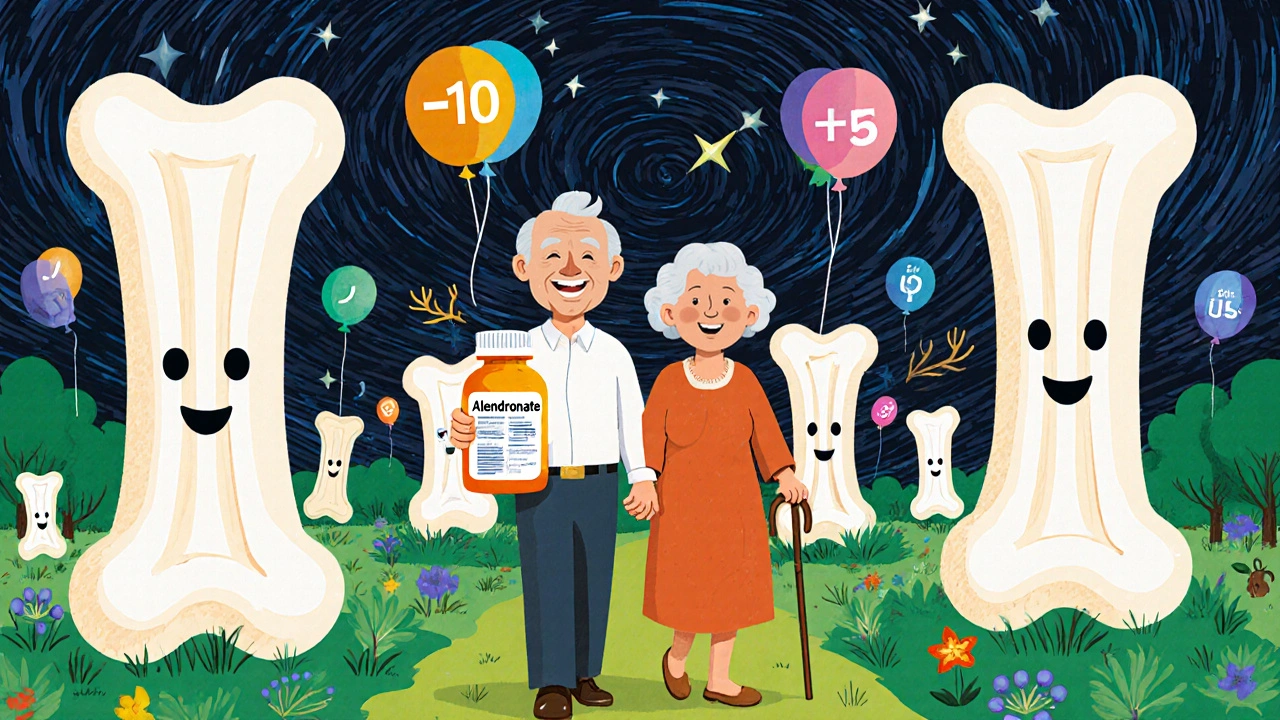
Real-Life Example: Sarah, 58, Bristol
Sarah had rheumatoid arthritis for 8 years. She took 15 mg of methotrexate weekly and prednisone 5 mg daily. She thought her joint pain was just the disease. She didn’t exercise much. She barely drank milk. At her annual check-up, she asked for a bone scan. Her T-score was -2.8-osteoporosis.
Her doctor started her on alendronate and vitamin D. She began walking 30 minutes daily and added light weights twice a week. She quit smoking. Six months later, her repeat scan showed no further loss. At 18 months, her bone density improved slightly. She didn’t get a fracture. She didn’t feel better right away-but she stopped being scared of falling.
What to Do Next
If you’re on methotrexate, here’s your action plan:
- Ask your GP for a DEXA scan if you’ve been on methotrexate for more than 2 years-or if you’re over 50 with any other risk factor.
- Take 1,000-1,200 mg calcium and 800-1,000 IU vitamin D daily. Get it in pill form if diet isn’t enough.
- Start walking or lifting weights 5 days a week. Even 10 minutes a day helps if you’re just beginning.
- Stop smoking and limit alcohol to one drink or less per day.
- If your scan shows low bone density, ask about bisphosphonates or denosumab. Don’t delay.
Protecting your bones isn’t optional. It’s part of staying on methotrexate safely. You’re not just treating inflammation-you’re protecting your future mobility, independence, and quality of life. Start today. Your bones will thank you in 5 years.
Can methotrexate cause osteoporosis even at low doses?
Yes. Even low doses of methotrexate (7.5 mg per week) can lead to measurable bone loss over time, especially after two or more years of use. Studies show bone density declines faster in users compared to those not on the drug, regardless of dose. The longer you take it, the higher the risk.
Should I stop methotrexate to protect my bones?
No. Stopping methotrexate can cause inflammation to flare, which damages joints and bones more than the drug itself. Instead of stopping, focus on protecting your bones with calcium, vitamin D, exercise, and-if needed-bone-strengthening medications like bisphosphonates.
How often should I get a bone density scan?
If you’re on long-term methotrexate and over 50-or under 50 with other risk factors-get a DEXA scan now. If your first scan is normal, repeat it every 2-3 years. If you have osteopenia or osteoporosis, repeat every 1-2 years to track progress and adjust treatment.
Can I get enough calcium from my diet alone?
It’s very hard. You’d need to eat over 3 cups of dairy, plus leafy greens and fortified foods every day. Most people fall short. Supplements are safe and effective when taken at recommended doses (1,000-1,200 mg/day). Calcium citrate is best absorbed, especially if you take acid-reducing medications.
Do I need to avoid caffeine if I’m on methotrexate?
Moderate caffeine (1-2 coffees a day) doesn’t harm bone density in people getting enough calcium and vitamin D. But drinking more than 3 cups a day may reduce calcium absorption. If you’re at high risk for bone loss, limit caffeine and make sure your calcium intake is solid.
Are there natural alternatives to bisphosphonates?
No proven natural alternatives match the effectiveness of bisphosphonates or denosumab for preventing fractures in people on methotrexate. Supplements like strontium or collagen peptides show weak evidence in early studies but aren’t recommended as replacements. Stick with proven medical treatments if your bone density is low.
